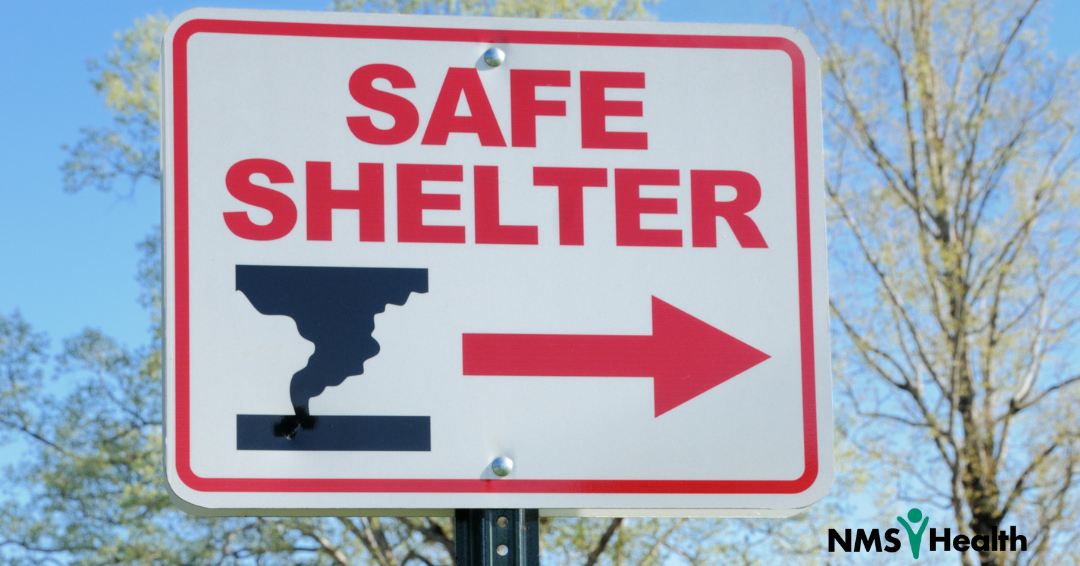In much of the United States, spring is tornado season, and meteorologists predict the 2024 season will be particularly active. As employers, it is crucial to recognize the increased risk posed by severe weather events and take proactive measures to ensure the safety and well-being of employees.
About 1,000 tornadoes are reported annually, resulting in 80 deaths and over 1,500 injuries. Tornadoes can occur at any time of year, but the peak season in the United States is typically from March to June.
Understanding Tornado Dynamics and Geographic Patterns
Tornadoes are most commonly associated with supercell thunderstorms. However, they can also form within bowing lines of storms. Despite accounting for only a fraction of a thunderstorm’s total energy, tornadoes concentrate their impact into a small area, making them particularly hazardous.
Although tornadoes are most common in the Great Plains, also known as “Tornado Alley,” they can occur in all 50 states and cause significant damage. Recent trends indicate a shifting focus of tornado activity eastward, with regions such as eastern Missouri, Arkansas, western Tennessee, and Kentucky experiencing heightened prevalence. Preparedness is paramount, with businesses urged to adopt proactive measures before tornadoes pose a threat.
“We’ve seen with climate change that severe weather threats, including tornadoes, are happening outside of the time of year and places that people typically associate with tornadoes,” Jon Porter, chief meteorologist at AccuWeather, said in a press release. “Do not be lulled into any false sense of security. There can be a tornado threat anywhere in the country with the right conditions.”
The Federal Emergency Management Agency advises individuals to recognize other tornado warning signs beyond the appearance of a funnel cloud. Other warning signs include:
- Dark clouds or sky that often is brown, green, or yellow
- Appearance of wall clouds (also known as pedestal clouds)
- An approaching cloud of debris
- A persistent roaring sound, similar to a freight train
Preparing Your Workplace
Preparation is crucial in mitigating risks associated with tornadoes in the workplace. One of the most effective ways to reduce risks related to tornadoes in the workplace is to develop comprehensive emergency action plans. These plans should outline protocols for identifying suitable shelter locations, conducting regular drills, and providing employees with the necessary training and resources to navigate tornado emergencies effectively. OSHA requires nearly all employers with at least 11 workers to keep a written, comprehensive emergency action plan. Employers with ten or fewer employees are permitted to communicate plans orally.
In order to ensure the safety of employees during tornado events, it is recommended that workplaces adopt specific measures. These measures include
- Establish a robust system for tracking employee whereabouts during emergencies, utilizing alarms and communication channels to alert personnel promptly.
- Conduct frequent testing of emergency systems to ascertain functionality and reliability.
- Develop strategies for communicating warnings to employees with disabilities or language barriers, ensuring inclusivity and accessibility.
- Implement procedures for accounting for all individuals in designated shelters, utilizing prepared rosters and checklists for efficient headcounts.
- Assign predefined duties to employees, with trained alternates in place to assume responsibilities in the absence or incapacitation of primary personnel.
- Develop a backup communication system in case the primary one fails, and test both systems regularly.
It is essential to find appropriate shelter locations to minimize risks during tornado events. Basements are the safest option, but if they are not available, small interior rooms or hallways on the lowest floor, away from windows, should be used. These areas should be made with reinforced materials to withstand debris impact. Employers must educate their employees on outdoor safety protocols, such as seeking sturdy buildings or vehicles for shelter and adopting protective measures in the face of flying debris.
After the Storm
Once the tornado passes, the Centers for Disease Control and Prevention advises the following:
- Check workers for injuries. Don’t move anyone seriously injured unless they are in immediate danger of further injury. Instead, seek medical assistance right away. If trained, begin CPR on anyone who has stopped breathing.
- Check apps, a NOAA weather radio, and other sources for additional emergency weather information.
- Proceed with caution through damaged areas, and watch out for hazards. Wear proper personal protective equipment when handling debris.
- Do not enter a damaged building until local authorities determine it is safe. Tornadoes can damage buildings and make them unsafe.
- Cooperate fully with emergency personnel.
Ready to elevate your workforce’s health? Partner with NMS Health for your occupational health screenings. With NMS Health, you are not just identifying and preventing future illness; you’re investing in a safer, healthier future for your team. Get started today!


